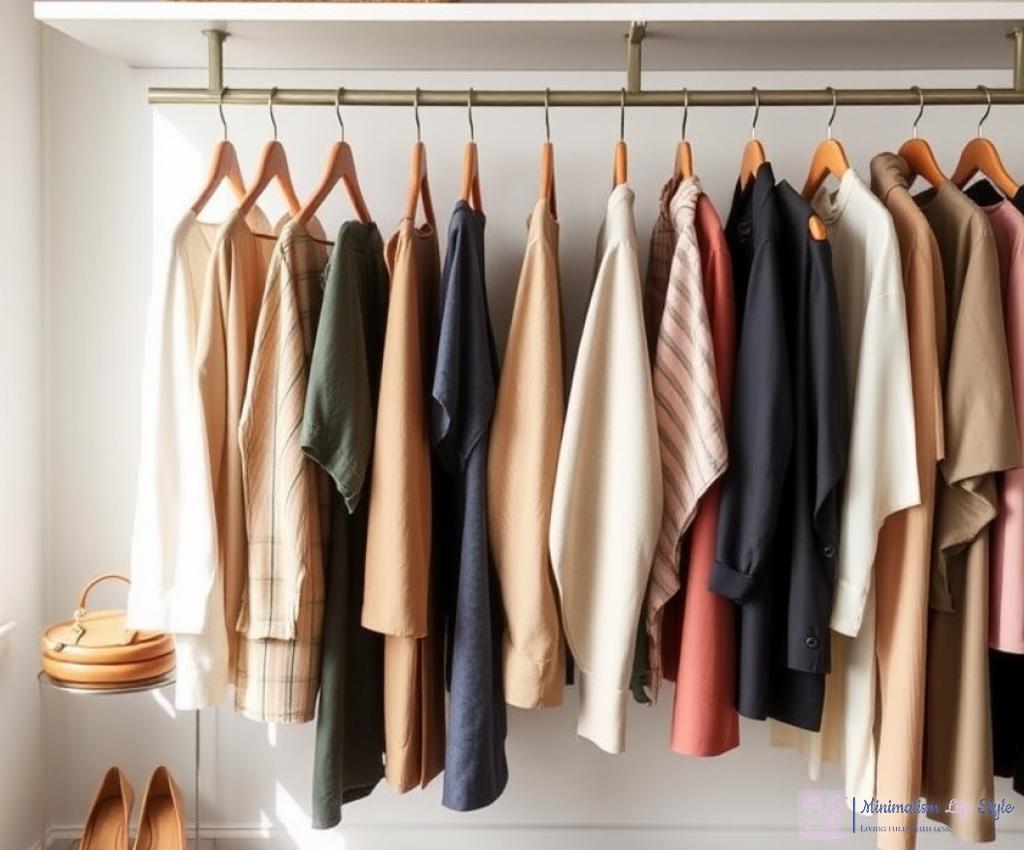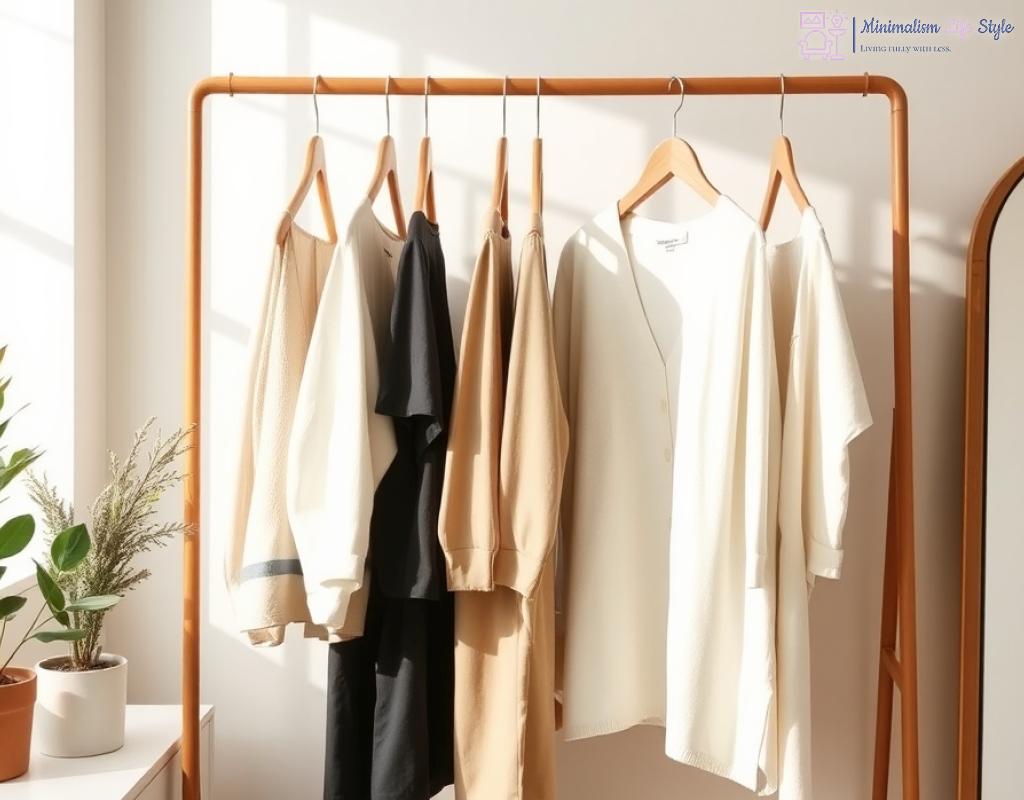Embrace the Capsule Wardrobe

What is a Capsule Wardrobe?
The concept of a capsule wardrobe has gained significant traction in recent years, captivating fashion enthusiasts and minimalists alike. But what exactly is it? A capsule wardrobe is a curated collection of clothing that is designed to be versatile and timeless, comprising essential pieces that can be mixed and matched effortlessly. This approach not only simplifies your daily outfit choices but also plays a crucial role in reducing textile waste, making it a sustainable fashion statement.
Benefits of Adopting a Capsule Wardrobe
Transitioning to a capsule wardrobe offers numerous advantages that extend beyond just decluttering your closet. By embracing this minimalist strategy, you can:
- Reduce Textile Waste: Fewer, high-quality garments mean less strain on the environment.
- Simplify Your Life: A streamlined wardrobe makes it easier to choose outfits and saves time.
- Save Money: Investing in quality pieces leads to long-term savings compared to fast fashion.
- Enhance Personal Style: A curated collection allows you to define and express your unique style.
Building Your Capsule Wardrobe: Key Steps
Creating a capsule wardrobe requires thoughtful planning and a bit of introspection. Here’s a step-by-step approach to help you get started:
- Audit Your Current Wardrobe: Evaluate what you own, keeping only items that you love and wear regularly.
- Define Your Style: Consider your lifestyle, colors you love, and the types of clothing that make you feel confident.
- Select Versatile Pieces: Choose items that can be dressed up or down, such as a classic blazer, well-fitted jeans, and neutral tops.
- Limit Your Numbers: Aim for around 30-40 pieces per season, including clothing, shoes, and accessories.
Adopting a capsule wardrobe is more than a trend; it’s a mindset that fosters sustainability and personal expression. By embracing this minimalist strategy, you not only curate a wardrobe that reflects your unique style but also contribute to a greener planet. So why not take the plunge and start your journey toward a more mindful and stylish way of dressing?
Master the Art of Upcycling
Transforming the Old into the New
In a world where fast fashion reigns supreme, the concept of upcycling has emerged as a beacon of hope for sustainability. Upcycling is not merely about recycling; it’s about taking items that may otherwise end up in landfills and creatively transforming them into something new and functional. By mastering the art of upcycling, you can not only reduce textile waste but also express your individuality through unique, handcrafted pieces. This practice encourages innovation, allowing you to breathe new life into garments that have lost their charm.
Creative Techniques to Revive Garments
There are countless ways to approach upcycling, and the possibilities are limited only by your imagination. Whether you possess sewing skills or simply enjoy crafting, numerous techniques can help you refresh your wardrobe. For instance, consider transforming an old pair of jeans into trendy shorts or a stylish handbag. You can also patch up worn-out items with fabric scraps, giving them a unique flair while extending their lifespan. By incorporating bold colors or patterns, you can create statement pieces that stand out while minimizing waste.
Building a Community of Upcyclers
Joining forces with like-minded individuals can amplify your upcycling efforts and extend their reach. By participating in local workshops or online communities, you can exchange ideas and techniques, inspiring one another to take on new challenges. Organizing clothing swap events not only promotes sustainable fashion but also fosters a sense of community among participants. The shared experience of upcycling and reimagining clothing can lead to innovative solutions for reducing textile waste. As you engage with others, you’ll find that the journey of upcycling is as rewarding as the end product, reinforcing the notion that fashion can be both creative and environmentally conscious.
Mindful Shopping: Quality Over Quantity
In an age dominated by fast fashion, the notion of mindful shopping has become increasingly vital for those wishing to minimize their textile waste. This approach is not merely about saving money or decluttering your closet; it’s a commitment to sustainability and a challenge to the status quo of consumerism. By prioritizing quality over quantity, shoppers can contribute significantly to reducing the impact of the fashion industry on the environment. Choosing thoughtfully crafted garments not only enhances personal style but also supports ethical practices.
Understanding the Value of Quality means recognizing that investing in well-made clothing often translates to durability and longevity. High-quality materials and craftsmanship ensure that garments withstand the test of time, minimizing the need for frequent replacements. As a result, shoppers can cut down on their overall consumption, effectively decreasing the demand for fast fashion items that typically have a much shorter lifespan.
Additionally, the allure of trends can sometimes cloud judgment, leading consumers to purchase items that may only be worn a handful of times. Mindful shopping encourages individuals to focus on garments that align with their personal style and can be integrated seamlessly into their existing wardrobe. This thought process not only reduces waste but fosters a deeper connection with the items we choose to wear.
Shifting Mindsets: From Impulse to Intention involves cultivating a shopping habit that prioritizes intention over impulse. Before making a purchase, consider asking yourself essential questions: Does this piece enhance my wardrobe? Is it versatile enough to be worn on multiple occasions? Will I cherish and wear it for years to come? By reframing the shopping experience in this way, consumers can significantly mitigate the environmental impact of their choices.
Moreover, a critical component of mindful shopping is evaluating the brand’s transparency regarding its production practices. Supporting brands that prioritize ethical labor, sustainable materials, and transparent supply chains not only empowers consumers but also places pressure on the fashion industry to adopt more responsible practices. As more individuals choose quality over quantity, the collective impact can lead to significant changes in the industry.
In conclusion, the journey towards reducing textile waste begins with mindful shopping. By embracing the philosophy of quality over quantity, individuals can curate a wardrobe that is not only stylish but also sustainable. This shift not only benefits the environment but also empowers consumers to make choices that reflect their values and commitment to responsible fashion.
The Power of Clothing Swaps
Reimagining Wardrobes: The Art of Clothing Swaps
As the fashion industry grapples with the repercussions of fast fashion, the need for innovative solutions to mitigate textile waste has never been more pressing. One such solution that has gained remarkable popularity is the clothing swap. This communal activity not only encourages sustainable practices but also fosters a sense of community and creativity. By exchanging garments, individuals breathe new life into their wardrobes without contributing to the environmental crisis. Let’s explore the transformative power of clothing swaps and how they can redefine your fashion experience.
Unleashing the Benefits of Swapping
Participating in a clothing swap offers a multitude of advantages, making it a compelling alternative to traditional shopping. Here’s a breakdown of the key benefits:
- Eco-Friendly Solution: By swapping clothes instead of purchasing new ones, you actively reduce textile waste and the demand for fast fashion.
- Diverse Choices: Swaps present an opportunity to explore a variety of styles and trends that you may not have considered before, enhancing your personal fashion narrative.
- Cost-Effective: Why spend money on new clothing when you can refresh your wardrobe at no cost? Swapping is an economical way to revamp your closet.
- Community Building: Clothing swaps create a platform for like-minded individuals to connect, share stories, and inspire each other’s fashion journeys.
How to Organize a Successful Clothing Swap
Ready to dive into the world of clothing swaps? Organizing a successful event can be both enjoyable and rewarding. Here’s a step-by-step guide to help you kickstart your swapping experience:
- Gather Participants: Reach out to friends, family, or local community members who are interested in sustainable fashion.
- Set a Date and Location: Choose a convenient time and space, such as a community center or a spacious home, to host the event.
- Establish Guidelines: Clearly communicate the rules regarding the types of items accepted, the condition of clothing, and how the swap will be conducted.
- Promote the Event: Utilize social media and community boards to spread the word and attract a diverse group of participants.
- Create a Fun Atmosphere: Consider incorporating refreshments, music, or workshops to enhance the experience and engage participants.
Clothing swaps are not only an effective way to reduce textile waste but also a celebration of creativity and community spirit. By participating in or organizing a clothing swap, you can transform your relationship with fashion while making a positive impact on the environment. So gather your friends, clear out those closets, and prepare for an exciting exchange of style!
Sustainable Care: Extending Garment Lifespan
In a world increasingly aware of the environmental impact of our consumption habits, sustainable care for our garments has become a cornerstone of responsible fashion. Extending the lifespan of clothing is not only beneficial for the environment but also enhances personal style by allowing us to cherish and wear our favorite pieces for years to come. This section will delve into practical approaches to garment care that can significantly reduce textile waste while nurturing a more sustainable wardrobe.
Elevating Your Garment Care Routine
Implementing a few simple habits can dramatically prolong the life of your clothing. By shifting focus from disposable fashion to a more enduring approach, you can contribute to a healthier planet and enjoy a more curated wardrobe. Here are some key strategies to elevate your garment care routine:
- Washing Wisely: Opt for cold water cycles and gentle detergents to minimize wear and tear. Less frequent washing not only protects fabrics but also conserves water and energy.
- Drying with Care: Whenever possible, air dry your clothes instead of using a dryer. The heat from dryers can weaken fibers and cause shrinkage.
- Storage Savvy: Store garments properly to prevent damage. Use padded hangers for delicate items, and fold heavier sweaters to avoid stretching.
- Immediate Repairs: Address minor issues like loose buttons or small tears immediately to prevent them from becoming larger problems.
Understanding Fabrics: The Key to Longevity
Not all fabrics are created equal, and understanding the materials that make up your wardrobe can guide you in caring for them effectively. Different fabrics require distinct care methods, and being informed can help you make better choices. Below is a concise comparison of common fabric types and their care requirements:
| Fabric Type | Care Instructions | Longevity Tips |
|---|---|---|
| Cotton | Wash in cold water, tumble dry on low. | Use fabric conditioner for softness. |
| Wool | Hand wash or dry clean only. | Store folded in a cool, dry place. |
| Polyester | Machine wash and tumble dry. | Use a lint roller to keep it fresh. |
| Silk | Hand wash with mild detergent, air dry. | Avoid direct sunlight to prevent fading. |
Creating a Mindful Wardrobe: Beyond Care
Extending the lifespan of your garments is just one piece of the puzzle when it comes to reducing textile waste. Building a mindful wardrobe involves a holistic approach that encompasses thoughtful purchases and embracing the stories behind each piece. By selecting high-quality items and caring for them properly, you not only make a statement about your style but also about your commitment to sustainability.




